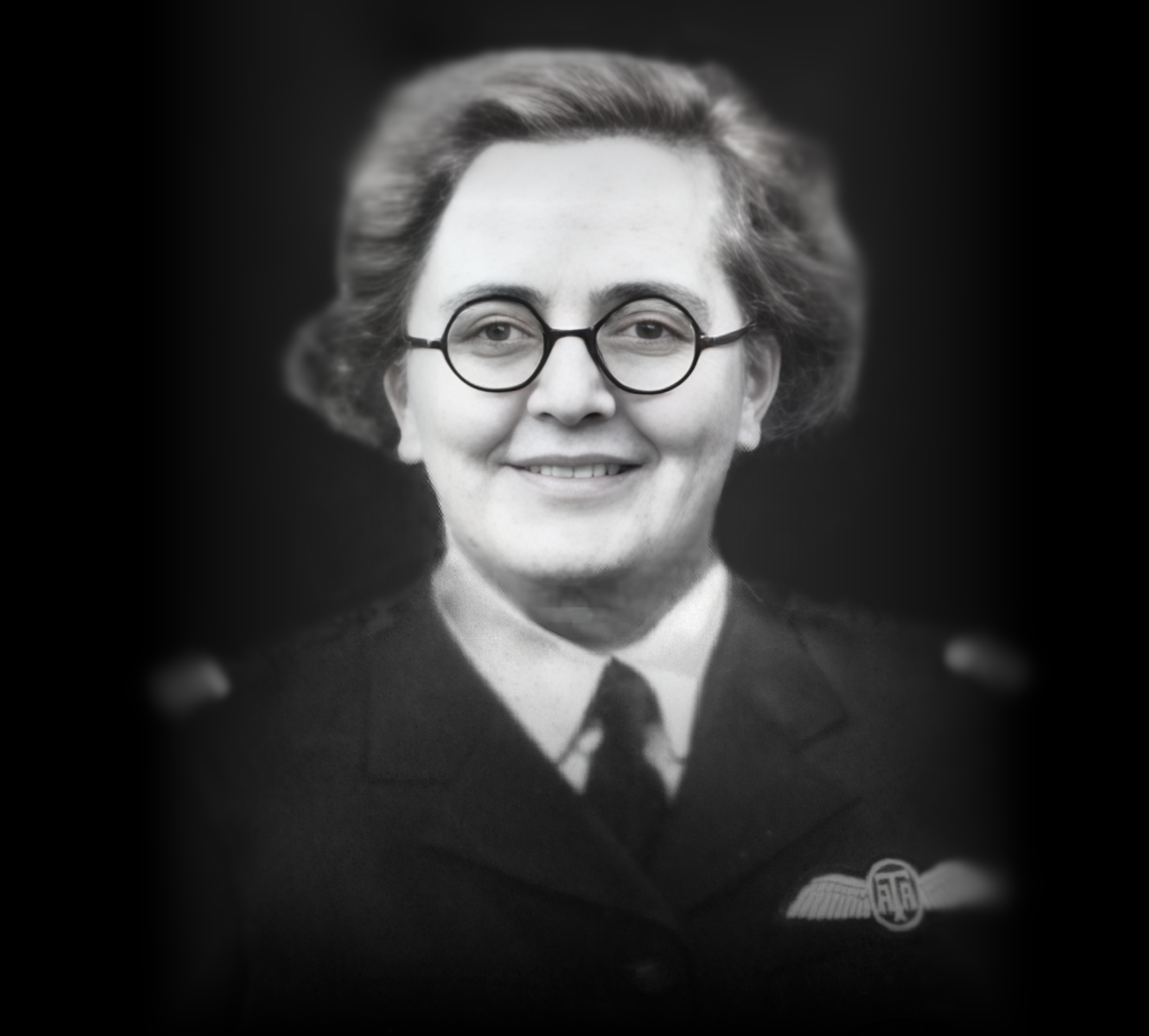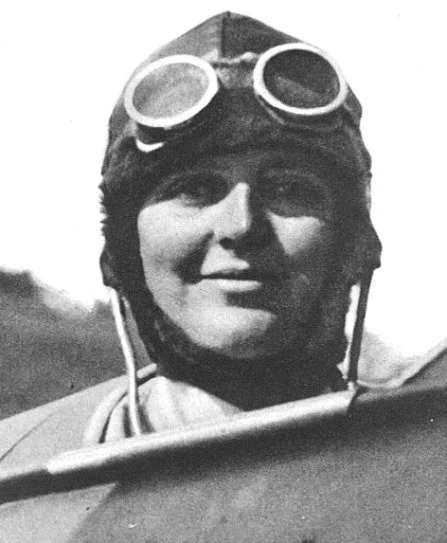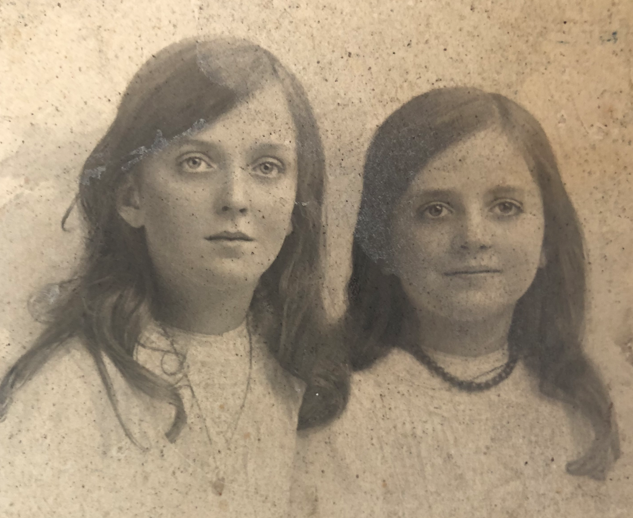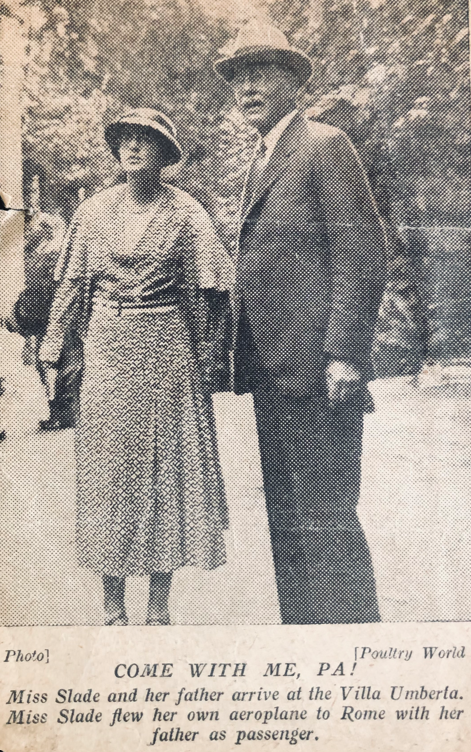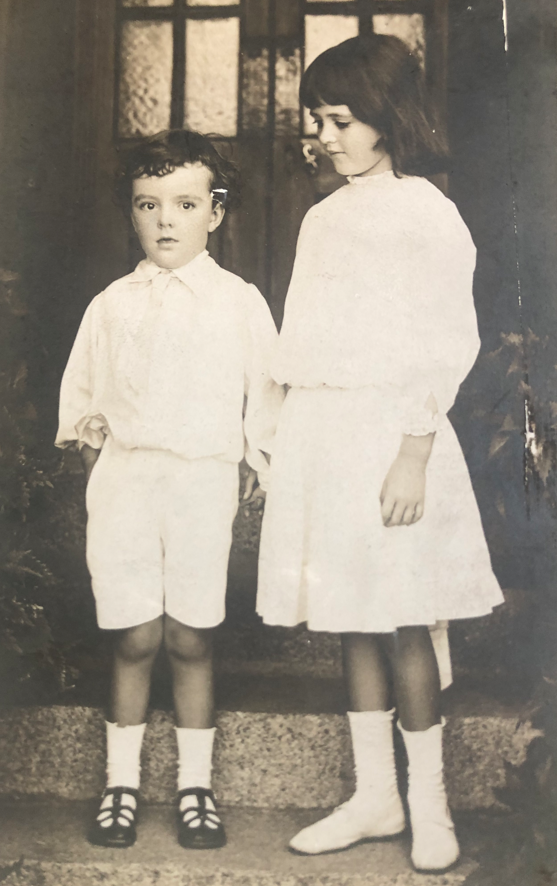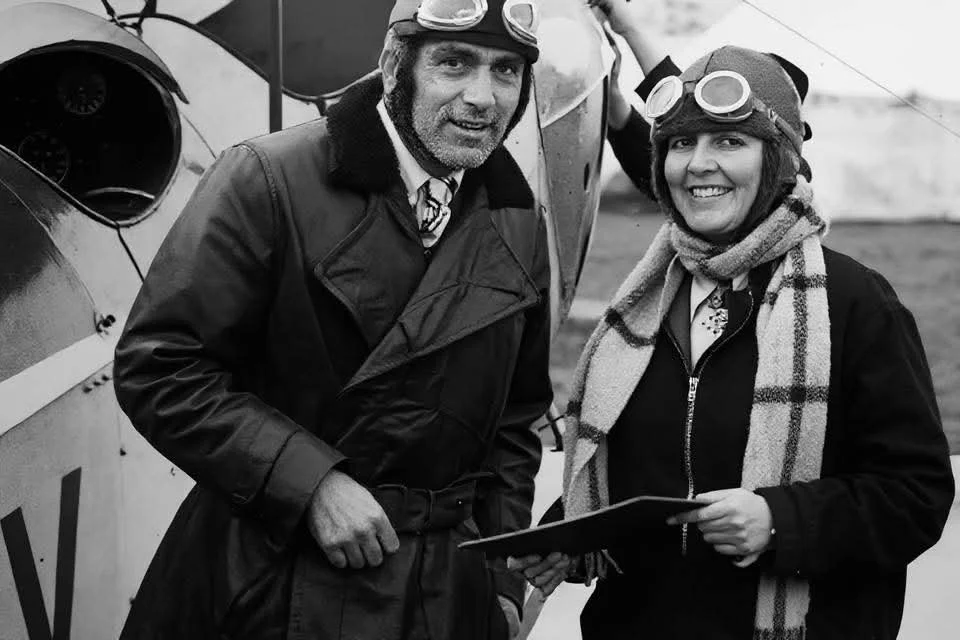In Remembrance of
Flight Captain Eleanor Isabella ‘Susan’ Slade
Air Transport Auxiliary
January 10th 1904- July 13th 1944
SPEECHES FROM THE MEMORIAL SERVICE
Catherine Beale, relative of Susan and historian:
Eleanor Isabella, always known as ‘Susan’ Slade applied to join the ATA in 1939. She was thirty-five years old and already had 579 hours of flying on her log, in Britain, France, Germany, Italy, Holland, Belgium, Hungary, Poland and Switzerland. She had gained her licence at Newcastle over a decade earlier, in September 1928, putting her within Britain’s first 30 women pilots. She was persuaded to do so by her great school friend Constance Leathart, the first woman outside London to gain her pilot’s licence.
Susan took to what was called ‘sporting flying’ and owned successively her own de Havilland Cirrus, Gipsy and Puss Moth planes. She ‘flew to most of the light aeroplane meetings in this country, accompanied often by her younger brother [Tim, Susie’s father] as passenger.’ In September 1931, she won the main race of Britain’s first all-women’s flying meeting, at Sywell Aerodrome, Northamptonshire in a thrilling finish described by one gentlemen spectator as “too exuberant”.
Earlier that year she was photographed at Reading, competing with, amongst others, Amy Johnson and Pauline Gower, later the ATA women’s Commander in Chief.
There survives a photograph of the time that Susan flew her father (a retired barrister and KC in Hong Kong) to a poultry fair in Rome. Perhaps most memorably, she landed in 1938, with her sister Betsy at what they thought was Salzburg but was in fact Berchtesgaden. The astonished guards, not knowing what to do with them, gave the young ladies a tour of Hitler’s private apartments. But then came war, and by the Battle of Britain in summer 1940, a desperate shortage of pilots.
Susan reported to the women’s ATA base at Hatfield, Hertfordshire on 1 st November 1940 and remained there through 1941. From June 1942, she moved to No. 15 Ferry Pool at Hamble for two months, then in August, transferred permanently to No. 5 Ferry Pool. This was at Luton, and from mid-May 1943, at RAF Thame, at Haddenham aerodrome, near Aylesbury, Buckinghamshire. She progressed from single- to twin-engined planes, ultimately becoming a Class 4+ pilot, qualifying her to fly medium bombers. In total Susan ferried thirty different types of aircraft, including the Harvard, Battle, Oxford, Hurricane, Fairchild, Spitfire, Blenheim, Mustang, Typhoon and Mosquito for a total of 223 hours.
Susan had spent twenty-seven of those hours flying Wellingtons before her fatal accident 81 years ago. She was required to fly Z1690 from here to RAF Wing at Aylesbury. She took off in a small group, but the Wellington banked 50˚ to starboard and lost height. The Gloucestershire Police
Special Sergeant who saw the accident asserted that Susan deliberately steered the Wellington away from Great Rissington village, coming down instead in Whaddon Field on Glebe Farm. The plane burst into flames. Susan was buried five days later, near her father at Stokenchurch. Her mother chose, for Susan’s headstone, words from her own Baha’ai faith: “Death have I ordained even as glad tidings for thee; wherefore dost thou sorrow?”
An inquiry was held, at which no cause for the crash could be identified; there was no evidence of engine failure; elevator or elevator trim was suspected.
Susan’s loss was felt keenly by the ATA, particularly by No 5 Ferry Pool. RAF Thame was where, from mid-1943, young women trained who had joined the ATA with no prior experience of flying. Susan was Officer in Charge of Women Personnel. For many, it was their first time away from home, and although exciting, it could also be daunting. Many of them welcomed Susan’s greater experience of flying and of life, besides her personal warmth. One, June Gummer, recalled, over fifty years on, in 1997 ‘Suzey looked after us… She was a delightful person... we were all shattered by her death.’
Susan was a loss to the Pool in other ways. For ten years before the war, Susan worked for Airwork Ltd who owned and ran Heston Airfield to the west of London. The airport was built by Nigel Norman and Alan Muntz and Susan was there from the start, initially in the office as Secretary. Heston opened in style in 1929 by hosting the eighth annual King’s Cup flying race. One correspondent noted that ‘Efficiently managing the day-to-day business was dynamic little Susan Slade.’
Heston became, in the 1930s, ‘the Ascot of aviation’, ‘the centre of private flying… Besides being about the best run aerodrome in the country, [it] became the social focus of all the best and brightest and jolliest people in Civil Aviation.’ People (including Susan) took flying lessons, maintained their aeroplanes there, and formed groups to fly to continental air rallies; it was the home of the Old Etonian and Guards flying Clubs. As the airfield’s popularity grew, Susan took on the management of the restaurant and hotel. As one contemporary observed ‘there were few places outside a good London restaurant where one could get a better meal than was provided under her management’.
As a result, Susan wasn’t only acquainted with just about everyone in the very small world of social flying, she had invaluable experience in the administration of an aviation hub, and, no doubt, a degree of authority. In January 1942, Susan’s ATA assessment recorded that she had shown ‘great devotion to duty, accepted responsibility and taken over command of the pool when necessary’. She was promoted to Flight Captain the following month.
Susan therefore carried a dual role; taking her turn at ferrying all sorts of aircraft, but also helping to run the ferry pool. Her last assessment, in February 1944, said that ‘her efforts are tireless and her value inestimable.’
Although today we mark the day of her loss, I suspect that Susan might encourage us to give thanks for the preceding sixteen years of fulfilment, freedom, friends and sheer fun that flight brought her. For her generation and class, born when a single woman could barely leave the house unchaperoned, flying was unimaginably liberating. Now you could fly solo to Cape Town (Lady Mary Bailey in 1928); or Australia (Amy Johnson in 1930). Mildred Bruce between 1927 and ‘29 held records on land, at sea and in the air; the Duchess of Bedford took up flying in her 60s; Dorothy Spicer became the first woman aircraft engineer to gain her level D Air Ministry Licence, in 1935, qualifying her to build all components of an aircraft – engine or airframe. Pauline Gower won for the ATA women, wage parity with the ATA men in 1943.
By their example, such inspirational women set the course for others. The British Women Pilots’ Association was formed in 1955 and this year celebrates its 70 th birthday. Among us today is Lynn Barton, British Airways’ first woman pilot (from 1987). What might have delighted Susan most about this memorial is that her story encouraged Air Cadet Sgt Bailea Harrison in her interest in aviation.
To end, some words by someone who knew Susan, from her obituary in The Aeroplane:
‘she had undefeatable courage… she showed the same resourcefulness in emergencies, and the same cheerfulness in adversity. She was a loyal friend, always ready to help anybody in trouble, and she was excellent company. She will be sadly missed by her many friends.’
John Webster, Air Transport Auxiliary Association Secretary writes:
The founder of the ATA, Gerard d’Erlanger, was a director of the then British Airways, to which nearly seven and a half thousand ATA staff were to be contracted over the six years of war, with over three and a half thousand on strength during its busiest time in 1944-45. The organisation thus began by being authorised to recruit a small group of suitably qualified older male pilots, some of whom had served in the Royal Flying Corps during World War One, to assist the military by flying non-operational aircraft in its support. As the war progressed, the ATA not only recruited many more pilots but also a large number of ground staff and, thanks to the efforts of the multi-skilled pilot Pauline Gower, female pilots later joined their male counterparts and led to some 168 women and nearly 1250 men joining as ATA aircrew (a combination of Pilots and Flight Engineers).
It is often said that the ATA was something of a ‘Foreign Legion of the Air’, for pilots were recruited from twenty-four other countries and, with ATA’s acceptance of those with certain disabilities (such as the missing of an eye or a limb), as an early example of an ‘equal opportunities employer’!
It is amusing to reflect on the alternatives that the letters ATA could stand for which included ‘Ancient and Tattered Airmen’, in reference to those first male recruits, ‘All Types Accepted’ and rather unkindly ‘Always Terrified Airwomen’; but the most appropriate was probably ‘Anything To Anywhere’.
In order to handle the ferrying of aircraft around the UK, ATA set up a number of outstations known as Ferry Pools; the aircrew from which moved aircraft around the local area and some, designated Transit Pools, tackled the continuation legs of longer flights handed over by crews from Ferry Pools further away.
Organisation of the day-to-day ferrying tasks was a complex one, with not all pilots qualified to fly the aircraft types required to be moved, the Operations staff had to match suitably available staff to each ferrying task. The allocated aircrew had then to check weather conditions and barrage balloon deployments before often having to consult the Pilots’ Notes for details of an aircraft they’d never before flown but which belonged to one of ATA’s six classification groups to which they had authorisation to fly any type therein!
Each of the Ferry Pools had a small number of taxi aircraft to enable its crews to be taken to where their ferrying duties would start and to, hopefully, collect them after their day’s work. Initially, those aircraft were impressed civilian types, but the Pools were later equipped with military nine or ten seat twin-engined Ansons and four seat single-engined Fairchilds.
Although ATA’s initial recruits were qualified pilots, they had little or no experience of flying the vast number of different military aircraft types, some one hundred and forty seven in all, and so the ATA not only set up conversion training but also went on to recruit those who had never flown any aircraft, establishing a training school to teach recruits to fly from scratch! Of particular note is the fact that 11 of the already qualified female pilots were authorised to fly four-engined bombers after conversion training. Here too it is appropriate to mention that Susan Slade, with her vast experience and senior ATA rank had been involved in the flight training role, which I believe was probably when she was at the Thame Ferry Pool in Buckinghamshire.
Whilst ATA’s primary function became the moving of aircraft between factories, maintenance units and RAF/RN squadrons, its duties expanded over the war years and saw it being involved in such missions as casualty evacuation and all manor of ferrying tasks into Europe and as far as North Africa.
The fascinating story of the ATA is one of which it could be said that ‘if it were not true you would not believe it’. However, believe it or not, in the course of six years, the ATA ferried some three hundred and nine thousand aircraft which involved nearly four hundred and fifteen thousand ferrying hours and the need to taxi its pilots to and from where they were needed over eighteen and a quarter million miles!
Left: Her sister Betsy Right: Susan
Left: Susan Right: Her father Marcus
With special thanks to:
ALL OF OUR AMAZING DONORS, without whom none of this would have been possible.
&
Family of ‘Susan’ Slade: Catherine Beale, Nicholas Beale, Rachel Beale, Susie Slade
The Upper Rissington parish council & Residents
The Air Transport Auxiliary Association
The Commonwealth War Graves Commission
The Royal British Legion
THE RAF Association (RAFA)
The WRAF, WAAF, RAF(W) Association
2624 Sqn R.(Aux)A.F Regiment Association
Gloucestershire Lord Lieutenant’s office
Oxfordshire Lord Lieutenant’s office
Chipping Norton Mayor and Town Council
Anything to Anywhere Living History Group
OXCOT Military Vehicles Trust (MVT)
Willcox Granite
Rotary In The Rissingtons
Cotswold Business Centre
Stephanie Hemming (Bugler)
Left: Her brother Marcus Right: Susan

